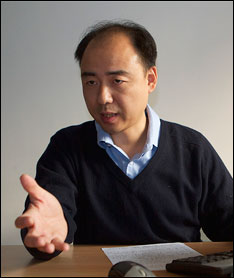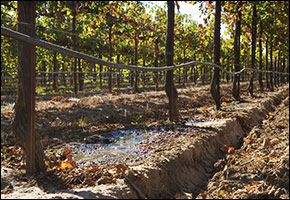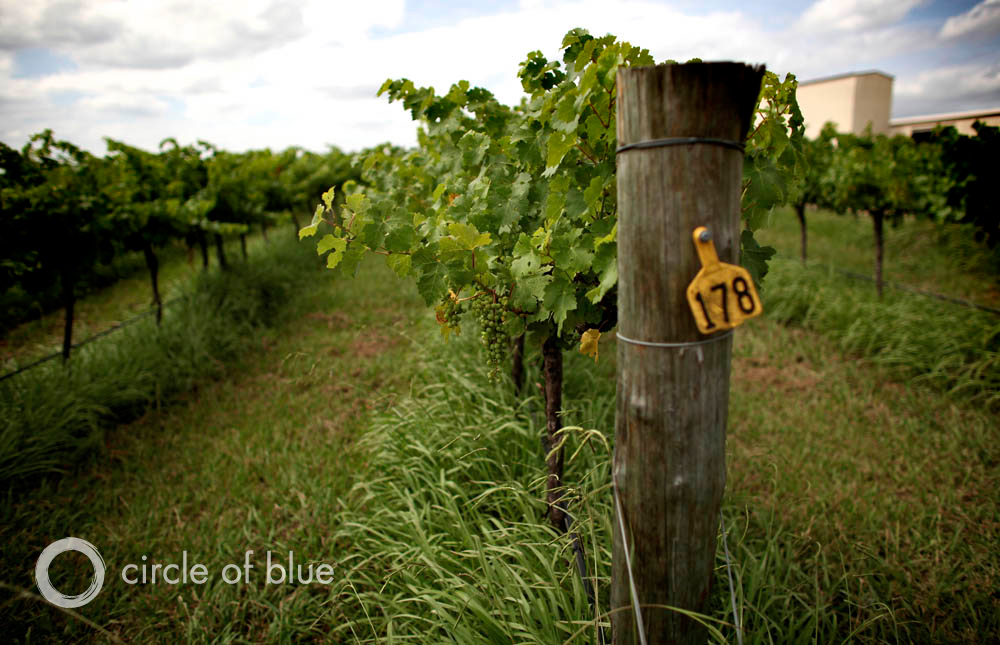Q&A: Ma Jun on China’s Economic Development and Water Resources
Ma Jun tells Circle of Blue that China is still on the track of a highly energy- and resource-intensive model, with the need to de-couple economic growth from the expansion of resource consumption.

Welcome to Circle of Blue Radio’s Series Five in 15, where we’re asking global thought leaders five questions in 15 minutes, more or less. These are experts working in journalism, science, communications design, and water. I’m J. Carl Ganter. Today’s program is underwritten by Traverse Internet Law, tech-savvy lawyers representing Internet and technology companies.
Our guest today is Ma Jun, who directs the Institute for Public and Environmental Affairs, which in 2006 developed the Pollution Map Database, China’s first public database of water pollution information. He is the author of “China’s Water Crisis,” a comprehensive look into the water scarcity and pollution problems confronting China’s rapid economic development. Circle of Blue spoke with Ma about China’s emerging water-energy collision.
Having said that, through our research and the research and analysis of the major experts in China, we came to the conclusion that our discharge is still way beyond the environmental capacity to sustain that. And the reality is probably even harsher than what the statistical data shows because sometimes there are some gaps in the data-gathering and -reporting system. So the reality means that we have to double our efforts. Sometimes there are a lot of talks about shifting the focus from expansion to conservation, but in reality, much of the resources are put on projects like the South-to-North Water Diversion Project. We should take no pride of doing such a project. This is a sobering moment for us to reflect upon how we drove ourselves to such a situation. What if we don’t transfer that water to north China? We probably could have a collapse of the social economy in some of the cities, which are going to run out of water. So we have to seriously reflect that. If we don’t, this extra volume will only delay the coming of the crisis a little bit. It will not really resolve the whole problem. It would mean that even with this, it cannot fill out even the current, existing gap, let alone that much bigger gap in the future, unless we do something very, very different in our water governance.
And then the other example is about the huge dams. This is another example of the conflict between our energy demand and the water resources protection goal. If we continue the trend that we are seeing now, in ten years’ time—in less than 15 years’ time—we are going to see most of our rivers being seriously dammed, and we are going to see the over exploitation of our rivers, of our water resources, happening on each major river at that time. And we are going to see a permanent loss of our biodiversity on those rivers. So I see that future is there. But, on the other hand, I do see some bigger efforts made, some more participation from all the different stakeholders of our society, including the NGO activities. Through these efforts of environmental transparency, we have managed to push over 320 major polluters on our list to come here, to come to the NGOs mostly to explain what went wrong and how they try to fix that. And quite a few of them have been through the independent, third-party audit. And 50 of them managed to remove some of the multiple records of violation by proving that they are in compliance with the laws and standards, that they have taken sufficient corrective actions.
We’ve been speaking with author Ma Jun. To find more articles and broadcasts on water, design, policy, and related issues, be sure to tune in to Circle of Blue online at 99.198.125.162/~circl731.
This interview was performed by Nadya Ivanova and Aaron Jaffe, and produced by J. Carl Ganter. Our theme is composed by Nedav Kahn. Circle of Blue Radio is underwritten by Traverse Legal, PLC, Internet attorneys specializing in trademark infringement litigation, copyright infringement litigation, patent litigation and patent prosecution. Join us gain for Circle of Blue Radio’s Five in 15. I’m J. Carl Ganter.
Circle of Blue provides relevant, reliable, and actionable on-the-ground information about the world’s resource crises.









Can we try to transform the water into energy by a simple way, so we can save the water and satisfy the energy demand.
Very interesting piece. I hope the speaker is correct in saying that there is increasing concern about water quantity and quality in China. We wish the Chinese people the very best of results in continuing with their robust economic growth while still improving the environmental performance of their industries.
Enforcement and consistency seem to be keys to better outcomes. Whatever factors hinder enforcement should be overcome, both for the sake of China and the sake of the rest of the world, which indirectly benefits when China is a prosperous, healthy, and transparent society.